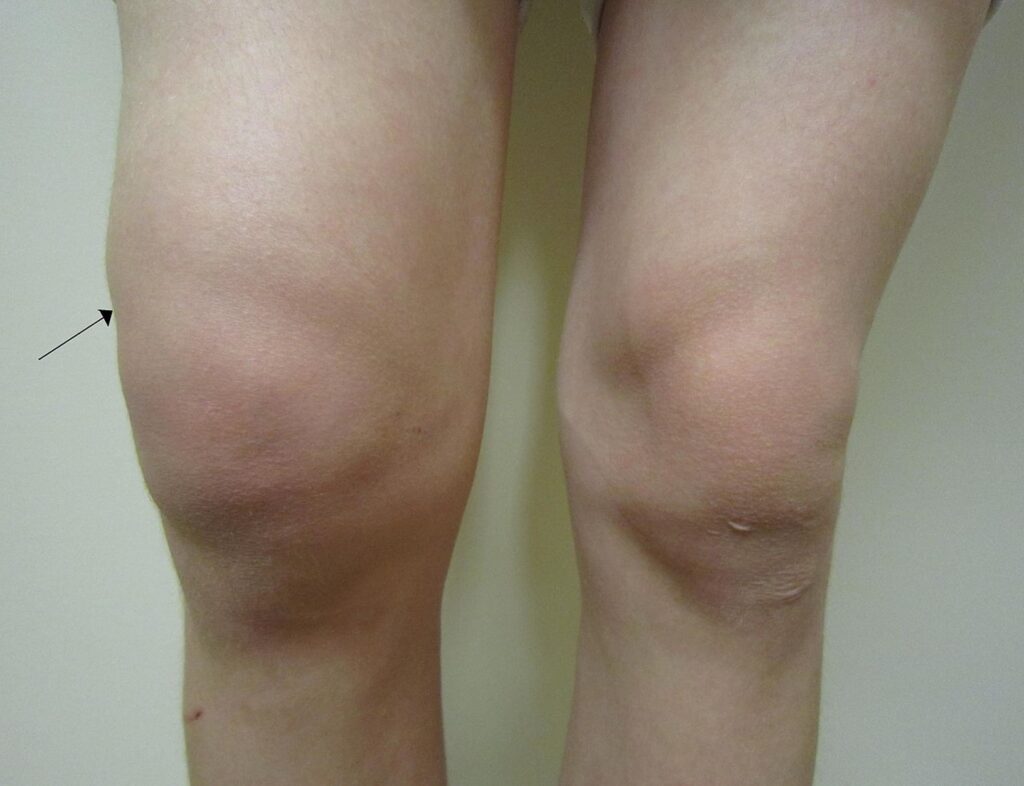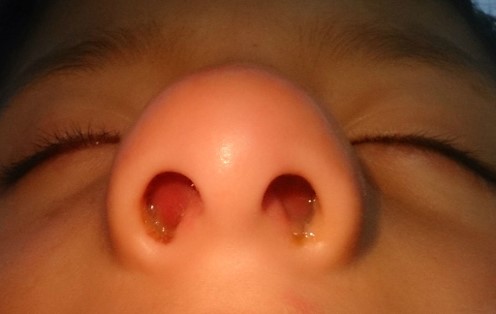It is important to know the types of soft tissue injuries
- To assess the severity of the injury sustained by the patient since every injury type is due to different severity of trauma
- Gives an idea about the management
- Knowing the types of injuries help you communicate your findings with your team members and seniors
Contusions and hematomas
- The most common closed soft tissue injuries you will see in your practice
- Mechanism:
- Fracture causes internal bleeding (at fracture site and in the skin) which gradually tracks to the skin and result in a bruise called contusion (contusion is the medical term for a bruise)
- If blood collects at some place during this process , this blood collection is called hematoma
- Pattern of contusion gives you an idea about the fracture location and the severity of soft tissue injury associated with it (e.g. calcaneal fracture result in contusion on sole of the foot)
- Contusion takes several hours to appear after injury (so you may not see it at time of presentation to emergency department) and take several days to reach its full extent
- Contusion stages:
- Early stage: it start as reddish or purplish discoloration in the first 2 days with tenderness
- Subacute stage: then turn to bluish or greenish color in the 5 days after as the body start to break down the blood
- Healing stage: then transitions to yellowish or brownish as the body reabsorbs the broken down blood in the second week , and the size of the contusion decrease
- Resolution stage: the bruise continue to fade and eventually disappears completely in the third week
- Now regarding hematomas, hematoma appears as a lump on the injured site
- deep hematoma result in local swelling and tenderness, superficial hematoma may compromise skin viability (lead to skin necrosis) especially in skin areas that are thin and overlying a bone like pretibial region
- Treatment: focus on treatment the fracture and the contusion or hematoma resolve by itself, if big hematoma then it might need to be drained or aspirated
Swelling
- inflammatory response to the injury which causes local increase in vascular permeability => swelling of the tissue with increase temperature
- Swollen area has reduction in capillary circulation and reduced capacity to heal
- Operating on swollen skin will have higher risk of wound dehiscence
- Treatment of swelling is with RICE: rest, ice (cooling), compression, elevation
- When swelling resolves, skin takes on wrinkled appearance and regains elasticity and that is when surgery is safely performed

Blisters
- Blisters are formed due to rapid development of swelling in some area over the body
- Mechanism: The swelling cause an injury between the epidermis and dermis which lead those two layers to displace from each other and the space fills with serous fluid which is termed “clear fracture blister”, but if the underlying capillaries in the dermis are also injuries, the blister will fill with blood and termed “hemorrhagic blister”
- Blisters are more famous in burned patients specifically second degree burns
- Blisters resolve in two weeks after the injury
- Treatment: Best if left undisturbed if possible, blister fluid is sterile but if deroofed then it get colonized with bacteria
- If a surgical incision was done through a blister, then it takes longer for the skin to heal and carries higher risk of infection
Tenting
- Skin pulled tightly over a prominent bone end, angulated fracture make prominent bone end that pulls the skin with it
- Looks like a tent over the fracture area
- Tented skin has impaired circulation with risk of necrosis and breakdown , this convert closed fracture to open fracture and increase chance of infection
- Skin tenting is indication of urgent reduction of the fracture or the dislocation and maybe an indication of urgent surgery
Degloving
- Mechanism: Result from significant shear forces causing separation of sub cut tissue from underlying fascial or osseous structures with collection of fat, blood and necrotic tissue
- They most commonly affect the legs and are frequently associated with underlying fractures.
- Common cause: soft tissue of a limb are crushed by wheels of a vehicle
- Normal vascular supply arise directly from its underlying deep fascia, a degloving injury impairs the blood supply => skin necrosis after a while with infection and sepsis
- It is unwise to make incisions through degloved skin because rate of wound dehiscence and infection are extremely high
- Degloved skin is cool and can’t detect sensory input
- Treatment: surgical exploration and excision of all non bleeding skin and fat and grafting or flapping the injuries after that
Course Menu
This article is apart from Orthopedic Trauma Basic Principles Course, This course covers these topics:







